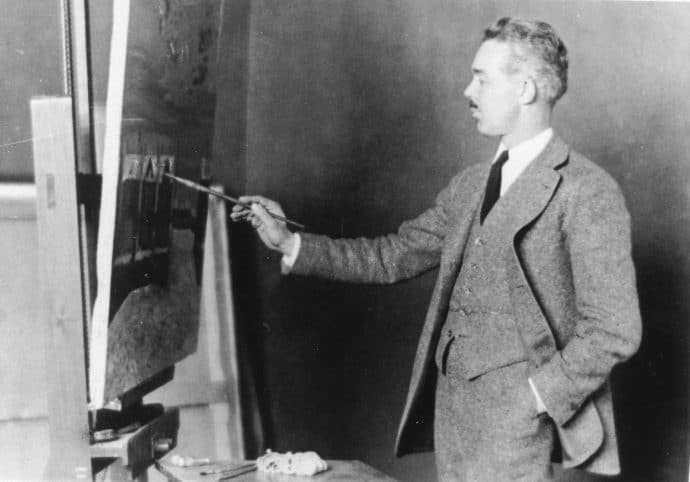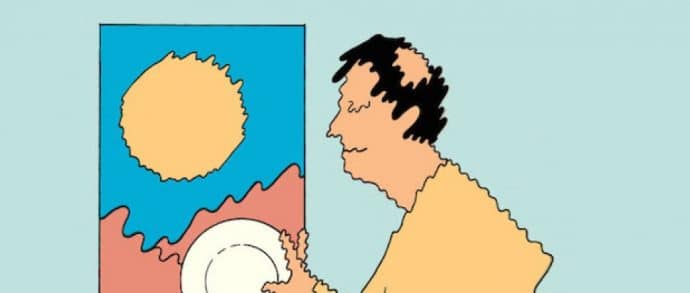The story goes like this, and it’s a story too attractive to dismiss: according to the grandchildren of Lawren Harris (the famous Group of Seven painter), Harris would often play Mozart on the stereo in his studio. As he pondered his next brushstroke, he would wave his paintbrush in the air, as though he were conducting a symphony. Today, when we look at Harris’ paintings, there is a certain element of layers, harmony and an epic grandeur that can also be found in Mozart’s symphonies if one’s eyes and ears are willing to work together.
While artists such as Harris dabbled in the abstract, it is possible that visual artists sometimes envy musicians. In the early 20th century, Wassily Kandinsky made the argument that music is the purest art form because it requires no physical representation to exist, to move the soul of the listener. While artists are often quick to define themselves as one thing another – a poet; a novelist; a landscape artist; a sculptor – it is often advantageous to remain fluid, slipping from one practice to the other and not prizing one discipline over another.
Patti Smith is one of the strongest examples of a multi-disciplinarian artist: she is celebrated for her music, her paintings and her writing. It’s easy to imagine that the role of the artist is to stir something in the heart of their audience while striving for the perfection of their own soul. By limiting themselves to one discipline, one is limiting the dimensions of expression.
If you are a piano virtuoso, the landscape that you draw may look a bit funny and childish, but there’s nothing wrong with that – it opens new artistic and intellectual frontiers to try new things. Almost everyone has had the experience of hearing music in a painting or conjuring an image out of a piece of music (in classical music “tone poems” are often aimed at evoking specific images).
By experimenting with visual art, poetry and photography, a musician could almost certainly make their art richer and create a more rounded experience. Scott Hansen who leads the band Tycho also produces photography and design under the alias ISO50. There is something colourfully psychedelic and geometrical about Tycho’s music that clicks with the aesthetic of Hansen’s visual endeavours. Similarly, Andrew Savage of Brooklyn based Parquet Courts provides all of his band’s album art through a combination of collage, oil painting and surreal poetry scrawled across the album sleeve.
If you’ve found an audience and a certain level of success as a musician or visual artist, consider spending some time and money training in a different discipline. If you’re a musician, you could consider taking art classes at the AGO, for example. If you’re an artist with some musical ambitions, seek out one of the many Long & McQuade music stores in Canada and sign up for music lessons on electric guitar or poly-symphonic synthesizer.
If you can soundtrack your own visual art, or paint a song you’ve composed, you may end up blowing your own mind – and potentially the minds of your audience.


